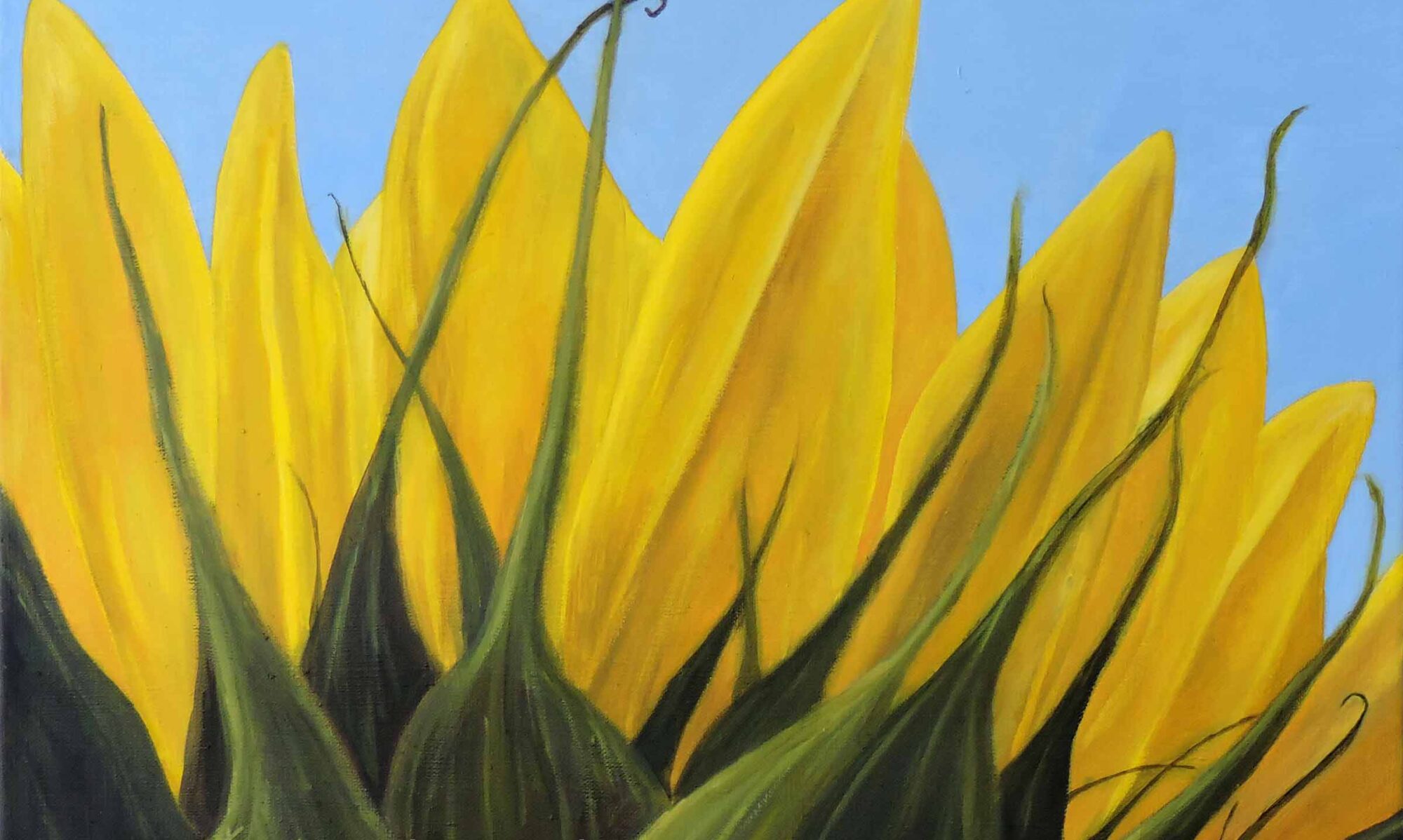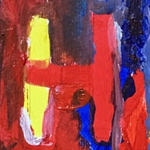
HALFTONE | HYPERREALISM
Quick links to more art terms and definitions are located at the end of the list.
Halftone
A reprographic technique used in printing and graphic design. It creates the illusion of continuous-tone imagery by using dots that vary in size or spacing. These dots simulate gradients or shades of color. When viewed from a distance, the patterned areas appear as smooth tones. Halftone images consist of thousands of small dots, and they play a pivotal role in printing, allowing for depth and gradation in monochromatic spaces
Handbuilding
A pottery technique where clay objects are created by hand without using a potter’s wheel. This traditional method allows artists to shape and form clay through various manual techniques such as pinching, coiling, and slab construction. Handbuilding offers greater flexibility and control over the final shape, enabling the creation of unique and intricate designs.
Hand-Painted Oil Paintings
Artistic creations produced by applying oil-based pigments to a surface (typically canvas) using traditional painting techniques. Each brushstroke is meticulously applied by hand, often resulting in a rich texture and depth that is characteristic of oil mediums. Unlike mass-produced prints, hand-painted oil paintings are unique, with subtle variations that reflect the artist’s individual style and vision. They often require time for the layers of oil paint to dry, contributing to the intricate layering and blending of colors seen in the final artwork. See blog article titled “Hand-Painted Oil Paintings Have Their Own Unique Story to Tell.”
Hard Pastels
Refers to square-shaped pastel sticks made of pigment and clay. Unlike their softer counterparts, hard pastels have a higher concentration of binder and less pigment. Ideal for drawing fine lines and detailed elements in art, they serve as precision instruments—crisp, dependable, and adept at imparting vivid hues to a canvas. See also Pastels.
The features of hard pastels are:
-
- More Binder, Less Pigment: Hard pastels have more binder and less pigment than soft pastels.
- Fine Lines and Details: Ideal for fine lines and sketching.
- Use: Great for drawing and can be combined with soft pastels.
- Surface: Also works on paper and board.
Hard-Edge Painting
Refers to a twentieth-century movement in painting in which the edges of shapes are crisp and precise rather than soft or blurred. The opposite of blending. This technique consists of rough, straight edges that are geometrically uniform and encompass rich solid colors, neatness of surface, and the arrangement of forms all over the canvas.
Harlem Renaissance
(Also known as the New Negro movement.)
Refers to a vibrant cultural and artistic explosion that took place in the Harlem neighborhood of New York City during the 1920s and early 1930s. The Harlem Renaissance is often associated with literary and performing arts, however, visual artists played a crucial role. Sculptors, painters, and printmakers formed a black avant-garde, infusing their work with Afrocentric themes and perspectives. Their art celebrated African American culture, identity, and history, countering derogatory stereotypes prevalent in popular culture.
Harmonious Colors
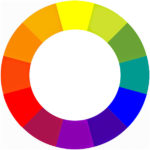
Colors that go well together and sit next to each other on the color wheel. For example: red and orange; orange and yellow; yellow and green; green and blue; blue and purple; purple and red. Complementary colors, analogous colors, and other related colors schemes are also considered harmonious.
Harmony (in visual art)
Refers to the skillful integration and coordination of diverse elements within a composition to achieve a visually pleasing and balanced result. Harmony encompasses the effective use of various artistic elements, such as:
-
- Color: Selecting a cohesive color palette where hues relate and complement one another.
- Value: Balancing light and dark tones to create depth and unity.
- Texture: Ensuring that surface qualities harmonize—whether it’s smoothness, roughness, or pattern.
- Shape and Form: Arranging shapes and forms so they work together seamlessly.
- Line: Guiding the viewer’s eye with purposeful lines—whether they’re bold, delicate, or flowing.
- Other Elements: Consider rhythm, balance, and proportion too.
Hatching
A technique used in art to create tonal or shading effects by drawing or painting closely spaced parallel lines. When lines are crossed or placed at an angle to one another, the method is called cross-hatching. Artists use this modeling technique, indicating tone and suggesting light and shade, by varying the length, angle, closeness, and other qualities of the lines, most commonly used in drawing, linear painting, engraving, and ethnic art.
HEX Color System
A way of representing colors from various color models through hexadecimal values. The term “hex” comes from the word “hexadecimal.” A hexadecimal color follows the format #RRGGBB, where RR represents red, GG represents green, and BB represents blue. A hex code is made up of six digits, usually preceded by a hashtag (#). The numbers in this code correspond to the amount of red, green, and blue in the color.
Hierarchy of the Genres
A formalized ranking system introduced by the great European Academies in 1669 in the wake of the Italian Renaissance. It comprised five painting-genres that were based on a genre’s prestige and cultural value. They are:
-
- History paintings were considered the highest form of art. It depicted significant historical, mythological, or religious events.
- Portraiture involved capturing the likeness of specific individuals—whether nobility, scholars, or common people.
- Genre paintings depicted scenes from everyday life—ordinary people engaged in typical activities.
- Landscape art focused on natural scenery—forests, mountains, rivers, and skies.
- Still life paintings featured inanimate objects—flowers, fruits, food, or everyday items.
Hieratic Scale
An artistic technique used to communicate importance through size. In this approach, figures of greater significance, such as deities or royalty, are depicted larger than less important figures, regardless of their actual physical proportions. This technique was prominently used in ancient Egyptian and medieval art to emphasize the hierarchical status of individuals within a composition.
Highlight
The area on an object where the light hits most directly, creating the brightest spot in a drawing or painting. This technique is used to direct attention or to emphasize through the use of pigment or color.
Historical Paintings (or History Paintings)
Artwork that incorporates a theme from classical history, mythology, or the Bible. They can represent a wide range of historical events, subjects, or themes. History paintings often portray a scene from a significant event from the past.
Horizon Line
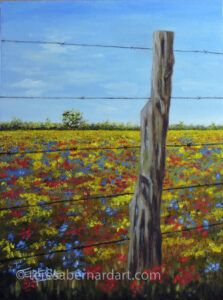
A level line in a painting where the earth’s surface (or sea) and the sky appear to meet. It defines the farthest distance of the background and is the place where a central vanishing point is established. The horizon line will ALWAYS be at eye level, regardless of whether you are at ground level or standing on a mountaintop. It changes as you change positions. The line at the top of mountains or buildings is not the horizon line; these objects “rest” on the horizon line. Sometimes hills, trees, buildings, or other objects can hide it from view, but the horizon line will always be present.
Horizontal Balance
Refers to the even distribution of visual weight across the horizontal axis within an artwork. This balance results in a feeling of equilibrium and steadiness within the artwork.
Horseshoe Arch
An architectural element characterized by its rounded, horseshoe shape. This arch curves more than a semicircle, creating a distinctive and aesthetically pleasing form. It is commonly associated with Islamic architecture, particularly in structures from the Moorish period in Spain, such as the Great Mosque of Córdoba. The horseshoe arch’s unique shape not only adds beauty but also contributes to the structural integrity of buildings. Its design has influenced various architectural styles across different cultures and historical periods.
Hudson River School
A prominent American art movement from 1825-1875, formed by a group of landscape painters who emphasized the beauty and significance of the American wilderness. Their meticulously portrayed landscapes, often idealized, captured the ruggedness and sublimity of the Hudson Valley.
Hue
Refers to the name of a color, such as red, green, or yellow. A hue is a pure pigment—one without any added tint (white) or shade (black). It’s the fundamental building block of color that differentiates it from the others.
Humanism (in art)
Refers to a Renaissance cultural movement that emphasized the value and agency of human beings, individually and collectively. Humanism sought to revive the classical art, literature, and knowledge of ancient Greece and Rome, focusing on human potential and achievements.
Hybrid Art
An art genre that combines different mediums, techniques, and technologies to create innovative and interdisciplinary works. This approach blurs the boundaries between traditional art forms and often incorporates elements from fields such as science, digital media, performance, and installation.
The fusion of diverse methods and materials in hybrid art allows for the exploration of new creative possibilities and often results in works that are immersive, interactive, and thought-provoking. Artists in this genre might use anything from biotechnology to virtual reality to create pieces that challenge conventional notions of art and engage audiences in novel ways.
Hyperrealism
A genre of art that emerged in the late 1960s and early 1970s as an extension of photorealism. Hyperrealism is characterized by its meticulous precision and acute attention to detail, often achieving a level of realism where the artwork is almost indistinguishable from a high-resolution photograph. Artists meticulously study photographs and then reproduce the images with lifelike accuracy, creating a trompe l’oeil effect—deceiving the viewer into thinking they’re looking at a real photograph.
You May Also Like
This art terms and vocabulary dictionary is provided as a valuable resource for art enthusiasts. If you like the information here and find it helpful, please consider purchasing a painting. Your support helps to cover the cost of keeping this art reference glossary and lexicon online. Simply click or tap the thumbnail link of any Teresa Bernard oil painting to view additional details.
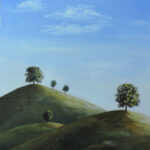
(2023)
9″ w x 12″ h
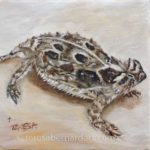
6″ w x 6″ h
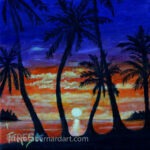
(2020)
6″ w x 6″ h
Art Glossary Quick Links
Contributing to The Art Dictionary
The art terms vocabulary glossary is a work in progress. If you know of an art term and its definition that is not currently included but you believe should be, please submit it to us for consideration. We’ll let you know if we do. Thanks!
Thanks for reading this!
